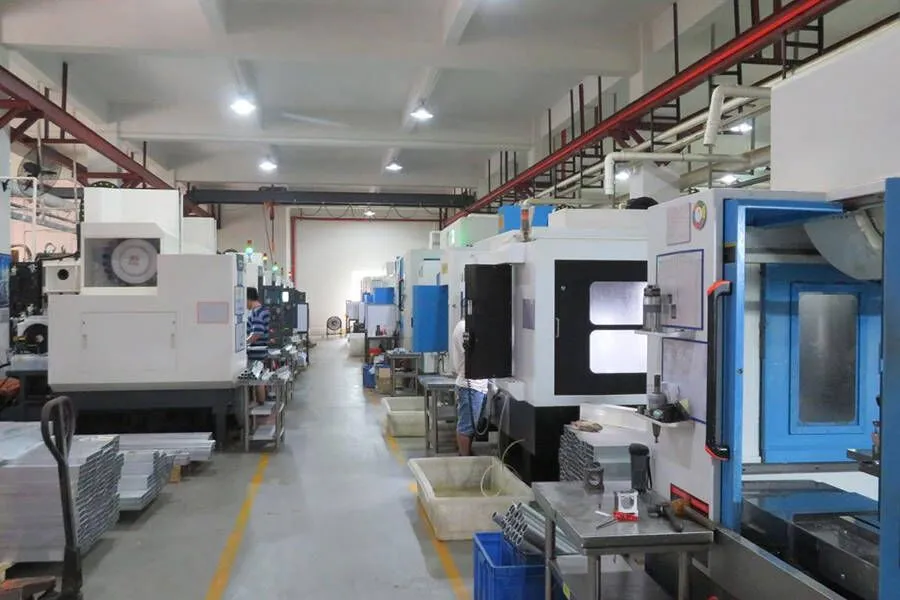The recent popularity of PEEK (polyether ether ketone) in complex industries such as aerospace and defense, medical and life sciences is well documented, and for good reason: characteristics. This versatility allows PEEK to be equally used in implants and custom medical devices or machined light aircraft components.
Less well known, however, is the process by which this plastic material is processed. With over 20 years of experience machining this thermoplastic material, we have written a brief introduction to PEEK CNC machining. We hope this has given you an insight into our polymer machining process and how it differs from metal CNC machining or injection molding.
Plastic CNC machining
Before discussing the PEEK CNC machining, it is important to have an accurate understanding of plastic machining. CNC (Computer Numerical Control) machining is a process in manufacturing that involves the use of computers to control machine tools. In the case of plastics machining, this involves the precise removal of layers from plastic materials. MIT introduced the technique of engraving plastic with drilling tools in the 1950s, and because the process is computer-controlled, products with extremely high tolerances can be obtained.
Due to the wide variety of polymers and composite materials, it is important to have strong technical expertise in polymer materials when machining plastic parts; some plastics are brittle, for example, while others cut in a similar manner to metals. The challenge of plastics lies in their wide range of mechanical properties and different behaviors when processed. Therefore, when machining PEEK, it is very important to understand the polymer structure of PEEK.
Thermoplastics vs. Thermosets
When it comes to polymers, there are two basic types: thermoplastics and thermosets. Because of the marked differences in how these polymers respond to heat and temperature, it is critical to know which polymer you are using.
Thermoplastics are capable of repeatedly softening and pliing when the temperature is raised, which means that when heated, the polymer undergoes physical changes. They have the following properties:
– Good creep resistance
– May melt before changing to gaseous state
– soluble in some solvents
– Swells in the presence of certain solvents
– Allows plastic deformation when heated
On the contrary, thermosetting resins become insoluble and insoluble materials when they are cured by heating or chemical methods, resulting in poor elasticity. They have the following properties:
– High creep resistance
– cannot be melted
– insoluble
– rarely swells in the presence of solvents
A phenolic material would be considered an example of a thermoset material, while PEEK is an example of a thermoplastic material. PEEK in particular is considered a semi-crystalline, high-performance thermoplastic. This makes it resilient enough to be machined to a variety of custom designs, with strong mechanical properties that provide resistance to fatigue and stress cracking, and good structure for bearing, wear and structural applications.
Industrial and medical grade PEEK CNC machining
Industrial grade PEEK is a high-strength, flame-retardant, wear-resistant thermoplastic with high impact strength and low coefficient of friction. It is known for maintaining its mechanical properties, even at high temperatures. As the name suggests, this grade is most commonly used in the aerospace, automotive, chemical, electronics, petroleum, and food and beverage industries.
Medical grade PEEK adds ISO 10993 compliant biocompatibility, high chemical resistance and sterilization compatibility. Additionally, this thermoplastic is radiolucent, meaning it cannot be seen under X-rays, MRI or CT. Medical-grade PEEK includes implant-friendly polymers such as PEEK Optima and Zeniva PEEK, which can remain in indefinite contact with blood or tissue while mimicking the stiffness of bone. Other variants of medical-grade PEEK are available for custom medical components and applications, such as joint and spinal instruments.
CNC Machining PEEK
Annealed PEEK Most shops will receive PEEK rods in various lengths, ranging from 6mm to 150mm in diameter. Relief of stress prior to machining via an annealing process is critical as this reduces the likelihood of surface cracks and internal stress development. Additional benefits of annealing include increased crystallinity and the opportunity to limit dimensional changes.

